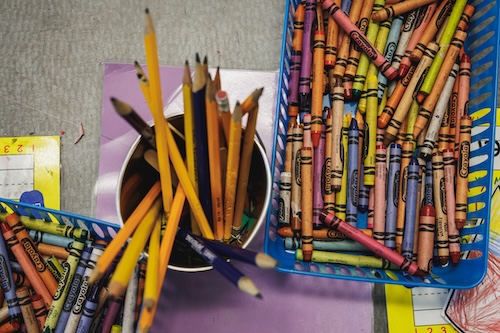
Two things are simultaneously true and inherently contradictory: Having a standardized source of student achievement data across districts is critical for evaluating progress and identifying student subgroups in need of extra support, and yet learning is an acutely individualized and personal experience. When we step into the classroom each day, we tailor our instructional practices to the needs and backgrounds of students whom we know and for whom we care deeply. When the state asks our students to choose a, b, c, or d, it doesn’t know them—not even superficially.
This challenge helps explain why, despite 90% of teachers reporting that students should have a summative measure of their learning from the beginning to the end of the school year, the public—and particularly teacher—perception of state tests is overwhelmingly negative.
The American K–12 education system has struggled to reconcile this paradox for decades. How can we objectively measure student learning, without confining our students to a box? How can we shift focus away from the product (the test score) and to the process (the learning experience) without losing the ability to evaluate our progress objectively? How can we improve assessments to better serve students and teachers? How can assessments provide the information necessary to help teachers understand students’ progress and how to help them improve, while avoiding the punitive atmosphere that is often associated with state tests?
Can we find a way to bridge the disconnect between the classroom and the test, a way to standardize authenticity? We—four educators from four different districts and three different states who teach across grade levels, subject areas, and school types—have some suggestions.
1. Focus on skills over content knowledge and depth over breadth
The standards-based reform movement aimed to push K–12 education toward a focus on developing skills rather than regurgitating content knowledge. Sometimes, though, we feel that state assessments don’t align with this spirit. In fact, only 56% of teachers report that their state summative assessments in math and English accurately measure students’ mastery of standards.
State assessments should ask deeper questions about fewer topics, focusing on skills over content knowledge and depth over breadth. For example, instead of 30 questions that cover the span of US history, an assessment could focus squarely on federalism, asking questions in a way that allows students to demonstrate their ability to apply their transferable analytical skills to a single political concept.
2. Make state tests adaptable
In our classrooms, we provide multiple access points for each student to show proficiency. This practice is encouraged; we recognize it as a critical piece of differentiating learning for our students. This is particularly important for our English learners, who cannot possibly demonstrate their proficiency in math or science on a test written in English without being able to read it. And yet, given their standardized nature, state assessments rarely allow this.
State assessments should be adaptable. They should meet our students where they are, adjusting and adapting to their abilities as they move through the test, while still providing a numeric score that allows us to objectively determine their proficiency, assess their needs, and support them in ultimately reaching grade-level standards for college and career readiness. And every test should be available in any language that a student might speak, so that we can confidently say we are assessing subject-specific skills, not language capability.
3. Issue more frequent, shorter tests
The end-of-the-year state assessment is an anxiety-inducing drumroll moment for both teachers and students, the singular moment over the course of the year when students show what they learned when all teaching and learning is already said and done. This prevents teachers from being able to effectively leverage the data the assessments produce. Even if the data from this assessment is returned quickly, it is not useful to the students’ current teacher, who does not have enough time left in the school year to address their needs. This timing leaves little opportunity to learn from the data or to shift our instructional practice for that cohort and places too much emphasis on a single moment in time. Think of it this way: If your GPS doesn’t course correct you along the way, how can you possibly figure out that you’re lost before it’s too late?
We want tests to move in the direction where they’ll be more frequent, shorter, and connected to what students learn in their classrooms. To work toward solving this problem, state tests could be shorter and administered multiple times during the school year. These changes would allow teachers to make informed decisions about curriculum and teaching practices with their current students and could in the aggregate paint a picture of what a group of students learned over the course of the year. Essential to this, though, is ensuring that these shorter tests truly are significantly shorter, that they are quick, varied ways of measuring student learning that happens right in the classroom, and that they enhance the learning process without disrupting learning time or punishing schools.
Change is possible
Implementing the changes we have suggested will require thoughtful planning. There are big questions to answer: How will this affect instructional time? How will we ensure teachers have a voice in designing these assessments? How can these assessments support teachers’ instructional practice? What are the budget implications? We think, though, that it’s not only possible, but also absolutely essential to answer these questions to pave this path forward.
The instructional coach among us often encourages his educators to teach with the test, not to the test, allowing the assessment to work hand-in-hand with their instructional pedagogy. We believe in a world in which all teachers are given the tools—including effective state assessments—to do just that.






